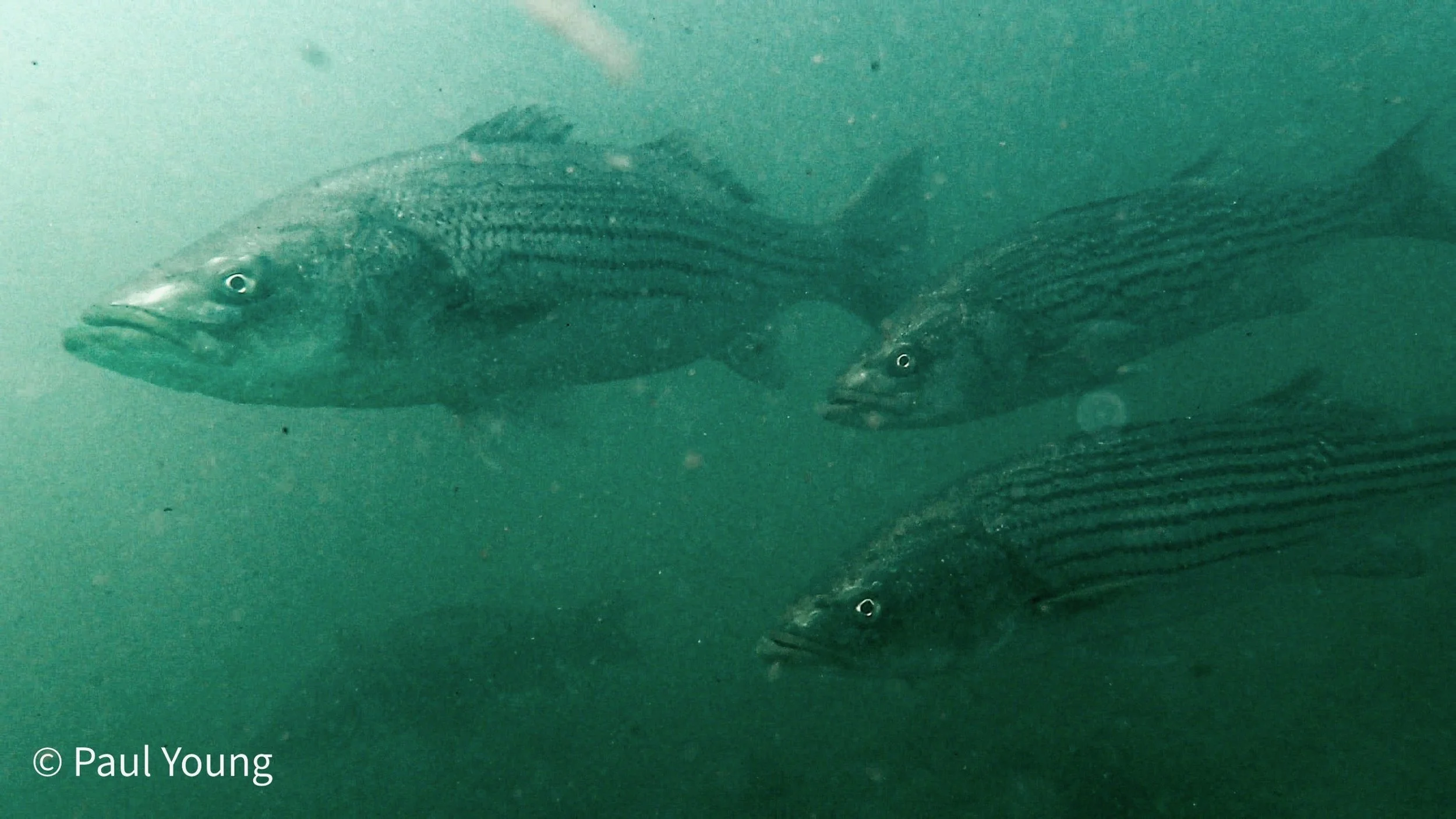The Facts on Striped Bass in California
Industry groups are asking the state to adopt a slot limit for striped bass. On October 8, the California Fish and Game Commission will decide whether or not to adopt an 18-30 inch harvest size limit for striped bass caught in inland and marine waters north of Point Conception. Based on the California Department of Fish and Wildlife (CDFW) analysis of this measure, there is a possibility that this slot limit will restrict spearfishing for striped bass. CDFW also notes the unknown effects of striped bass predation on other species and that a lack of funding will prevent population monitoring to determine the effectiveness or impact of a regulation change.
As with every issue, we combed through the available science, consulted with experts on the fishery and spoke with impacted anglers. Here are the facts on striped bass in California:
An angler questionnaire from 2022 claims that 67% of anglers support the 30 inch upper limit for a trophy fishery. We compared the number of anglers who responded to the survey with the number of fishing licenses sold that year and found that the survey represents less than 3% of licensed anglers. No meaningful data supports the claim that the broader fishing community supports the slot limit for striped bass. (There were 26,410 total responses to the questionnaire; 18,751 of those respondents fish for striped bass and 7,659 did not fish for striped bass. There were 1,629,198 licenses sold in 2022.)
Based on CDFW’s 2024 By the Numbers report, anadromous fish, including striped bass and sturgeon, represented less than 5% of the top types of fish targeted by recreational anglers. It is reasonable to assume the fishing industry is not sustained by striped bass. Prior to 2023, when the salmon fishery was open, salmon was a much preferred target for anglers and likely more important to sustaining the fishing industry.
Adult striped bass population numbers and abundance have declined from historical levels, but appear stable. Fishery dependent data from 1991-2022 show that angling effort targeting striped bass has not significantly changed, while catch and catch-per-unit-effort have significantly increased. The average size of harvested striped bass did not significantly change in that 30 year span. These data support the claim that the striped bass population is stable. Fishery independent surveys do show a decline in juvenile striped bass abundance, but this does not account for shifts in habitat due to drought or other environmental factors.
There is ample evidence that striped bass predate on salmon and steelhead (A few sources: 1, 2, 3, 4), and experts agree that even minimal predation levels will significantly undermine recovery efforts for these already threatened species. Even if we accept the unsupported argument that striped bass predation on salmon is negligible, the mere presence of striped bass influences salmon behavior and movement, which can inhibit their feeding and growth. These effects have population-wide impacts, risking the survival and resilience of these native and vulnerable fisheries. (Sources: 1, 2, 3) A review of striped bass on the coast of California also notes that independent efforts to recover salmon populations may attract mature striped bass for spawning and increase the predation pressure on local salmon, as well as other vulnerable fish species.
Given that striped bass are opportunistic predators that can live in a variety of habitats, it is very likely and supported by anecdotal reports from many anglers in our community, that there are impacts on nearshore marine species, as well. Many of these fisheries don’t have stock assessments and are not well-managed. These unknowns are a significant concern and have outsized impacts on already vulnerable and marginalized fishing communities.
The California Fish and Game Commission will decide on Wednesday, October 8 whether or not to adopt a slot limit for striped bass. Make your voice heard and oppose this irresponsible measure! Sign up for text alerts and we’ll text you from the meeting when it’s time to tune in.

